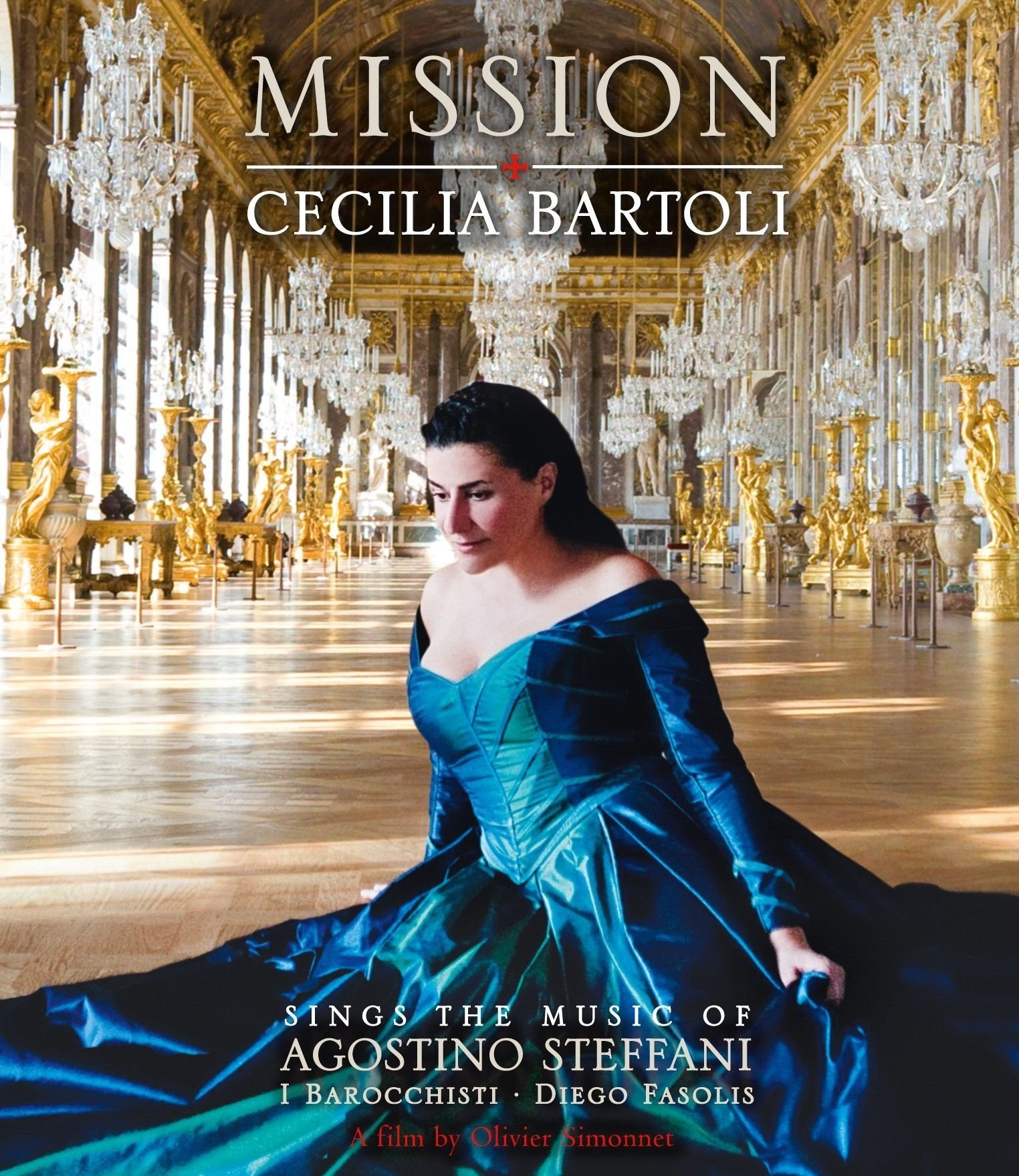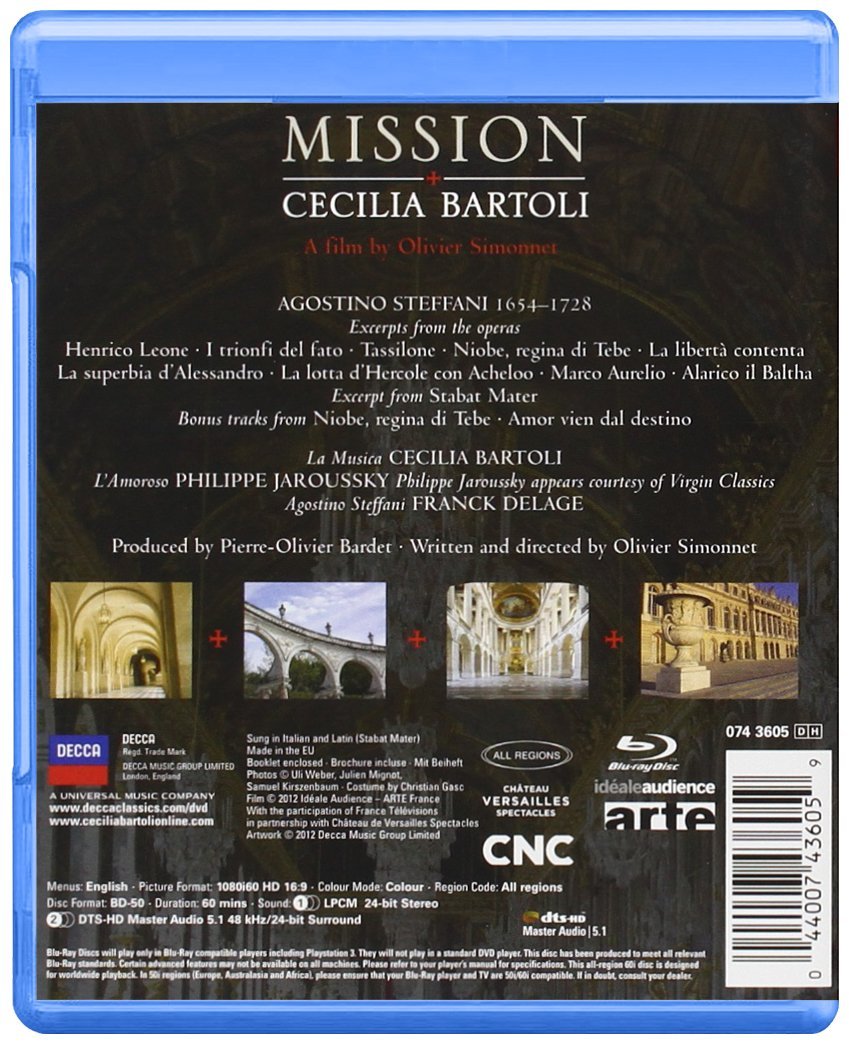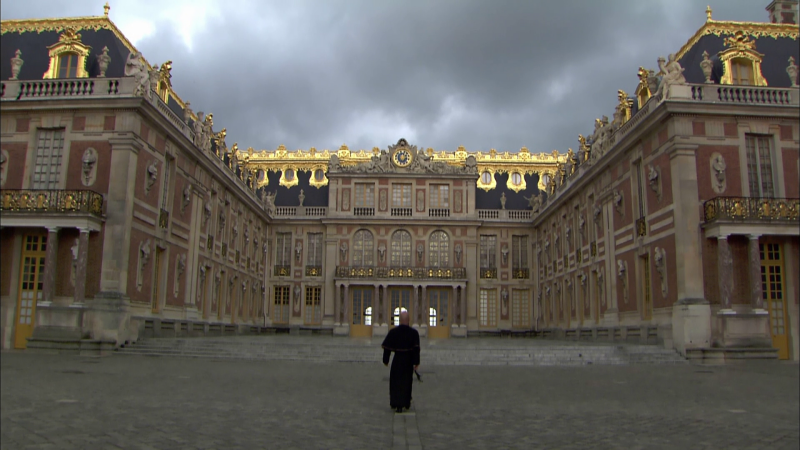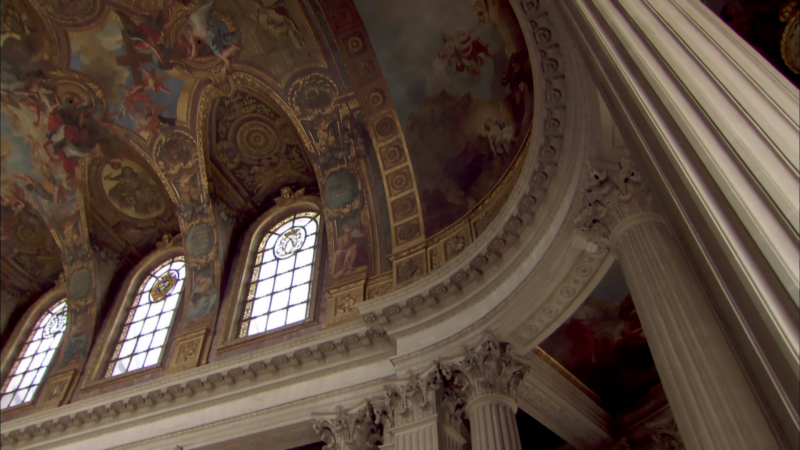

Cecilia Bartoli Mission recital of music by Agostino Steffani (1654-1728), an obscure pre-baroque composer whose music has long been neglected and that Bartoli promotes. Recorded 2002 at the Château de Versailles. Bartoli appears in almost every scene. She is joined by famous countertenor Philippe Jaroussky in several duets. Actor Frank Delage appears in the mute role of Agostino Steffani. The singers are supported by the I Barocchisti chamber orchestra (Conductor Diego Fasolis) and the Coro della Radiotelevisione svizzera (Swiss Radio Chorus)(Chorus Master Claude Hauri). Costumes designed by Christian Gasc. Directed for TV by Olivier Simonnet. Director of Photography was Alexis Kavyrchine; Sound Producer was Arend Prohmann; Producer was Pierre-Olivier Bardet. The video has the look and feel of a film more than a video, but the cadence is 30 (not 24) fps. A nice keepcase booklet has extensive credits for others who worked on this project and information such as the exact locations in the Château where each scene was shot. Released 2012, disc has 5.1 dts-HD Master Audio sound. Grade: A
Wonk Gordon Smith in France got a sneak preview of this title and quickly contributed his scoop to us in the following email (slightly edited):
"Mission is a 1 hour "film" made for HD TV in which a little known composer, Agostino Steffani, "revisits" the Palace of Versailles, where his music is being performed in various locations inside and outside the Château. This is a total feast for the senses. Apart from the music being fresh, often very lively, and also delicately wistful, the images are stunning. The setting is, of course, lavishly beautiful. Almost every shot could be taken as a hyper-realist painting. The composition of the shots has been done with extreme care, using a treatment of light and dark that must be inspired by the chiarascuro of Caravaggio! This hour's worth of Baroque indulgence takes classical music HDVDs to another level as far as I am concerned. This form of presentation is more engaging than watching any orchestra or concert performers on a restrictive stage."
Wow! Here's a few additional comments from me now that I've seen the film. Steffani was a polymath who had many missions in life in addition to writing music. The "Mission" in the title to the disc is Bartoli's personal project of introducing Steffani to music lovers of today. It seems Bartoli is so popular that she can tell Decca and everybody else what she wants and she gets her way! It rained most of the days of the shoot, which contributed a steamy, mysterious ambiance. The stars of the film are Bartoli (poor thing wears the same dress in every number!), Delage portraying Steffani, the music, and the Château. Cramming all this into one hour results in a pretty hectic show, but few would accuse it of being boring.
I agree with Gordon that the individual scenes are awesome. I kept thinking of Vermeer. I also declare that, to my taste, the I Barocchisti chamber orchestra is the best early music ensemble I have encountered. The Coro della Radiotelevisione svizzera also added thrills. This disc has the best countertenor singing I have heard. And I found myself strangely absorbed by the playing by a young woman (sadly not credited) of a soprano recorder during several Bartoli arias—never before have I heard a recorder sound so sweet, full, and seductive.
Here's the program:
Schiere invitte, non tardate (from Alarico il Baltha)
Ogni core può sperar (from Servio Tullio)
Ove son? Chi m'aita? In mezzo all'ombre...Dal mio petto (from Niobe)
Più non v'ascondo (from Tassilone)
Amami, e vederai (from Niobe)
T'abbraccio, mia Diva...Ti stringo, mio Nume (from Niobe) with Philippe Jaroussky
Mie fide schiere, all'armi!...Suoni, tuoni, il suolo scuota (from I trionfi del fato)
Sposa, mancar mi sento...Deh non far colle tue lagrime (from Tassilone)
Non prendo consiglio (from La superbia d'Alessandro)
Si, si, riposa, o caro...Palpitanti sfere belle (from Alarico il Baltha)
Notte amica al cieco Dio (from La libertà contenta)
Combatton quest'alma (from I trionfi del fato) with Philippe Jaroussky
A facile vittoria (from Tassilone)
Tra le guerre e le vittorie (from La superbia d'Alessandro)
Foschi crepuscoli (from La libertà contenta)
Dell'alma stanca a raddolcir le tempre...Sfere amiche, or date al labbro (from Niobe)
La cerasta più terribile (from La lotta d'Hercole con Acheloo)
Serena, o mio bel sole...Mia fiamma/Mio ardore (from Niobe) with Philippe Jaroussky (countertenor)
Dal tuo labbro amor m'invita (from Tassilone)
Deh stancati, o sorte (from La libertà contenta)
Svenati, struggiti, combatti, suda (from La libertà contenta)
Padre, s'è colpa in lui (from Tassilone)
Timori, ruine (from Le rivali concordi)
Morirò fra strazi e scempi (from Henrico Leone)
Non si parli che di fede (from Marco Aurelio)
And now for some screenshots. Here's the front door of the palace with Steffani approaching. I've been to Versailles twice, but all I saw was the backsides of 10,000 other tourists. How did Bartoli get the palace to herself for 6 days in the summer?
Some interior shots:
An intimate concert in one of the smaller rooms:
Here's a good shot of the lady who plays the recorder so well:
And here's a shot of the same scene above from another direction:
Here are two scenes of duets with countertenor Philippe Jaroussky:
This was the building where 5-position ballet was born. But it appears there are no auditoriums in the main Château. Chairs could of course be arranged in various rooms. And I think the guests often were expected to perform, not just sit around and watch. Here's the organ on the balcony floor of the Capelle Royale, which probably was provided with chairs for church services. This was the room where Marie Antoinette and Louis XVI were married. (If you just visit the Capelle you probably wouldn't see the organ manuals and stops. Note there's a large door on hinges that the organist opens to play the instrument.) Steffani was a Catholic priest (among other professions). Here Bartoli performs the Steffani Stabat Matar:
Here's another improvised venue where larger forces can be invoked:
Finally, temporary seats for an audience and chairs for the musicians are set up in a corner of the famous Hall of Mirrors:
Can anyone ID this noble soul? Does he approve of what he sees going on at the palace these days?
The storms subside. The earth is cooled for a nice walk in the back yard. This is, of course, just a small view of the vast outdoor area where the Sun King and his successors staged their famous festivals and events:

















